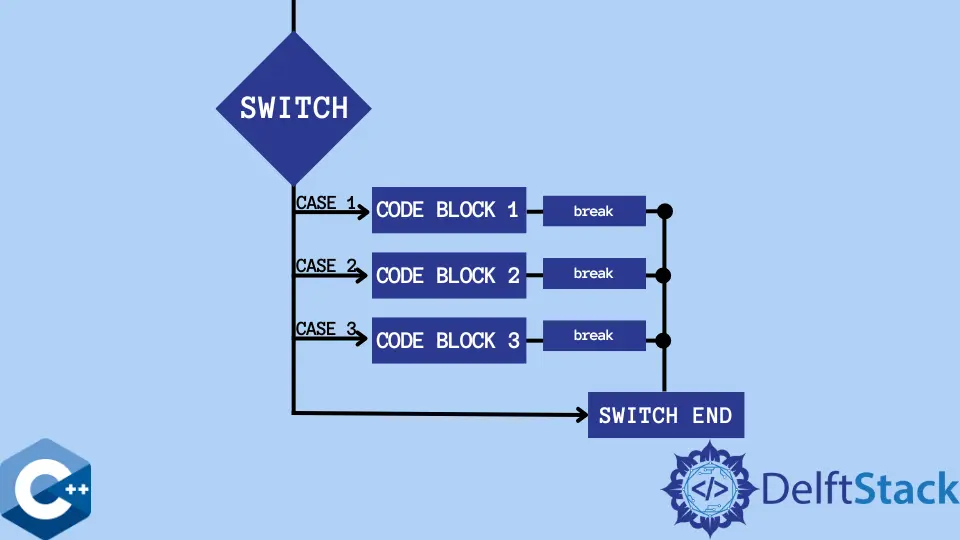C++ Switch 语句中的中断

C 和 C++ 中的 break 语句用于在 switch 语句的代码块中满足所需条件时停止循环迭代。
如果没有使用 break 语句,程序将继续执行,直到到达 switch 语句的末尾。
首先,我们必须了解 switch 语句的工作原理。
在 switch 语句的开头,我们必须提供一个表达式,然后程序将遍历 switch 语句中的每个 case,如果找到与我们提供的表达式匹配的 case,它将执行那个 case。
如果上述过程不能匹配表达式,程序会跳出 switch 语句并执行 default 语句。
C++ 中带有 break 的 switch 语句
#include <iostream>
using namespace std;
int main() {
int rating = 2;
switch (rating) {
case 1:
cout << "Rated as 1. ";
break;
case 2:
cout << "Rated as 2. ";
break;
case 3:
cout << "Rated as 3. ";
break;
case 4:
cout << "Rated as 4. ";
break;
case 5:
cout << "Rated as 5. ";
break;
}
return 0;
}
这里的表达式是 rating = 2。程序在这里所做的是它一个接一个地遍历每个 case 并检查提供的表达式的潜在匹配以停止进一步执行循环并终止它,给我们下面的输出。
Rated as 2.
C++ 中没有 break 的 switch 语句
让我们再次运行相同的代码,但这次是在每个 case 之后删除 break 语句。
#include <iostream>
using namespace std;
int main() {
int rating = 2;
switch (rating) {
case 1:
cout << "Rated as 1. ";
case 2:
cout << "Rated as 2. ";
case 3:
cout << "Rated as 3. ";
case 4:
cout << "Rated as 4. ";
case 5:
cout << "Rated as 5. ";
}
return 0;
}
输出:
Rated as 2. Rated as 3. Rated as 4. Rated as 5.
你可以看到,如果没有 break 语句,即使在满足要求后,程序也会打印每个 case 的值。
break 语句用于循环应该迭代的次数未知或循环满足某个预定义条件的情况。
当语句体中没有 default 语句且没有 case 匹配时,不会执行 switch 语句体。switch 语句主体内的任何位置都只能有一个 default 语句。
最后,break 语句也用于 do、for 和 while 循环。在这些情况下,break 语句会在满足特定条件时强制程序退出循环。
Nimesha is a Full-stack Software Engineer for more than five years, he loves technology, as technology has the power to solve our many problems within just a minute. He have been contributing to various projects over the last 5+ years and working with almost all the so-called 03 tiers(DB, M-Tier, and Client). Recently, he has started working with DevOps technologies such as Azure administration, Kubernetes, Terraform automation, and Bash scripting as well.
